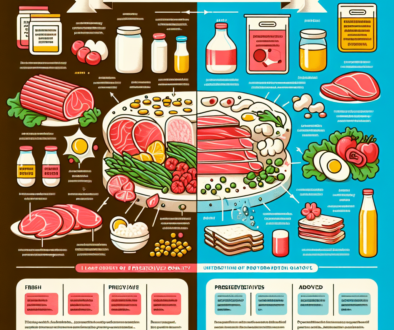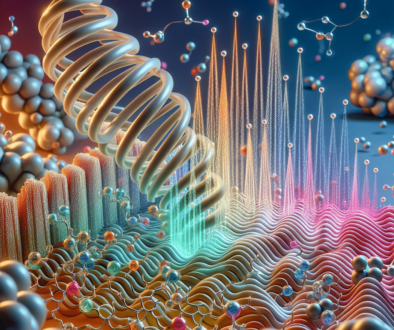Solubility Improvement Techniques for Proteins: Breakthrough Methods
-
Table of Contents
- Protein Solubility Enhancement: Breakthrough Techniques and Methods
- Understanding Protein Solubility Challenges
- Advanced Techniques for Solubility Improvement
- Genetic Modification and Protein Engineering
- Chemical Modification
- Formulation Strategies
- Physical Methods
- Case Studies and Examples
- Statistics and Market Impact
- Conclusion: Key Takeaways for Protein Solubility Improvement
- Discover ETprotein’s High-Quality Protein Products
Protein Solubility Enhancement: Breakthrough Techniques and Methods

Proteins are the workhorses of biological systems, playing crucial roles in virtually all biological processes. However, their functionality is inherently linked to their solubility, which can be a significant challenge in various applications, including pharmaceuticals, food science, and biotechnology. Improving protein solubility is therefore a critical area of research, with scientists continuously developing innovative methods to overcome solubility issues. This article explores the latest breakthrough techniques for enhancing protein solubility, providing valuable insights into the cutting-edge solutions that are transforming the field.
Understanding Protein Solubility Challenges
Before delving into the solutions, it’s essential to understand the factors that influence protein solubility. Proteins can be difficult to solubilize due to their complex structures, hydrophobic regions, and the propensity to aggregate. These challenges can lead to reduced bioavailability, decreased efficacy, and stability issues in various applications. As a result, improving protein solubility is not just a scientific endeavor but also a practical necessity for many industries.
Advanced Techniques for Solubility Improvement
Researchers have developed several innovative methods to enhance protein solubility. These techniques range from genetic engineering to novel formulation strategies. Below are some of the most promising approaches:
Genetic Modification and Protein Engineering
- Directed Evolution: This technique involves the iterative process of mutating a protein and selecting variants with improved solubility. Directed evolution mimics natural selection in the laboratory, leading to proteins with enhanced properties.
- Fusion Proteins: Attaching a highly soluble protein or peptide tag to a target protein can significantly increase its solubility. Tags such as maltose-binding protein (MBP) and glutathione S-transferase (GST) are commonly used.
- Surface Engineering: Modifying the surface amino acids of a protein to increase its polarity can improve solubility. This method often involves substituting hydrophobic residues with hydrophilic ones.
Chemical Modification
- Pegylation: The covalent attachment of polyethylene glycol (PEG) chains to proteins can enhance solubility and stability while reducing immunogenicity.
- Glycosylation: Adding carbohydrate groups to proteins can improve their solubility and stability, as well as their pharmacokinetic properties.
Formulation Strategies
- Use of Excipients: Excipients such as sugars, polyols, amino acids, and surfactants can stabilize proteins and prevent aggregation, thereby improving solubility.
- pH and Ionic Strength Adjustments: Altering the pH or ionic strength of the solution can shift the protein’s charge, leading to better solubility.
- Co-solvents: The addition of co-solvents like glycerol or dimethyl sulfoxide (DMSO) can enhance protein solubility by altering the solvent properties of the medium.
Physical Methods
- High-Pressure Homogenization: This technique uses high pressure to break down protein aggregates and improve solubility.
- Ultrasonication: Ultrasonic waves can disrupt protein aggregates, leading to increased solubility.
Case Studies and Examples
Several case studies highlight the effectiveness of these techniques. For instance, the use of directed evolution has successfully improved the solubility of therapeutic proteins, leading to better drug formulations. In the food industry, the genetic modification of plant proteins has resulted in more soluble and digestible protein ingredients for plant-based products.
Another example is the development of PEGylated proteins in pharmaceuticals, which has revolutionized the delivery of biologic drugs. PEGylation has been instrumental in creating long-acting forms of insulin and growth hormones, significantly improving patient compliance and treatment outcomes.
Statistics and Market Impact
The protein solubility enhancement market is growing rapidly, driven by the increasing demand for protein-based therapeutics and the expansion of the plant-based food sector. According to recent market analyses, the global protein ingredients market is expected to reach billions of dollars in the coming years, with solubility improvement technologies playing a pivotal role in this growth.
Conclusion: Key Takeaways for Protein Solubility Improvement
In conclusion, improving protein solubility is a multifaceted challenge that requires a combination of innovative techniques. Genetic modification, chemical modification, formulation strategies, and physical methods are all contributing to breakthroughs in protein solubility. These advancements not only enhance the functionality of proteins but also have significant implications for the pharmaceutical, food, and biotechnology industries.
The key takeaways from this article are:
- Protein solubility is a critical factor for the functionality and application of proteins in various industries.
- Breakthrough methods such as directed evolution, fusion proteins, pegylation, and the use of excipients are revolutionizing protein solubility enhancement.
- Case studies demonstrate the practical benefits of these techniques in real-world applications.
- The market for protein solubility improvement is expanding, with significant economic implications.
As research continues to evolve, we can expect even more innovative solutions to emerge, further unlocking the potential of proteins in diverse applications.
Discover ETprotein’s High-Quality Protein Products
If you’re in search of premium protein products that meet the highest standards of solubility and quality, look no further than ETprotein. Their extensive range of organic and plant-based proteins, including rice, pea, pumpkin seed, and sunflower seed proteins, are designed to cater to a wide array of industries. With a commitment to non-GMO, allergen-free products, ETprotein is your go-to source for reliable and effective protein solutions.
About ETprotein:
ETprotein, a reputable protein Chinese factory manufacturer and supplier, is renowned for producing, stocking, exporting, and delivering the highest quality organic bulk vegan protein and plant proteins. They include Organic rice protein, clear rice protein, pea protein, clear pea protein, pumpkin seed protein, sunflower seed protein, mung bean protein, peanut protein etc. Their offerings, characterized by a neutral taste, non-GMO, allergen-free attributes, cater to a diverse range of industries. They serve nutraceutical, pharmaceutical, cosmeceutical, veterinary, as well as food and beverage finished product distributors, traders, and manufacturers across Europe, USA, Canada, Australia, Thailand, Japan, Korea, Brazil, and Chile, among others.
ETprotein specialization includes exporting and delivering tailor-made protein powder and finished nutritional supplements. Their extensive product range covers sectors like Food and Beverage, Sports Nutrition, Weight Management, Dietary Supplements, Health and Wellness Products, and Infant Formula, ensuring comprehensive solutions to meet all your protein needs.
As a trusted company by leading global food and beverage brands and Fortune 500 companies, ETprotein reinforces China’s reputation in the global arena. For more information or to sample their products, please contact them and email sales(at)ETprotein.com today.














